Gorlice on the Carpathian Oil Tract
Traditions of Polish stone quarrying and mining date back to the medieval times. In the 14th century the oil extraction was already known in the areas of Sękowa, Lipinki and Libusza near Gorlice. From 1853 to 1858 Ignacy Łukasiewicz was working on the oil distillation and as a result of he developed the method of distillation on an industrial scale. In Gorlice he also constructed the world’s first street oil lamp.
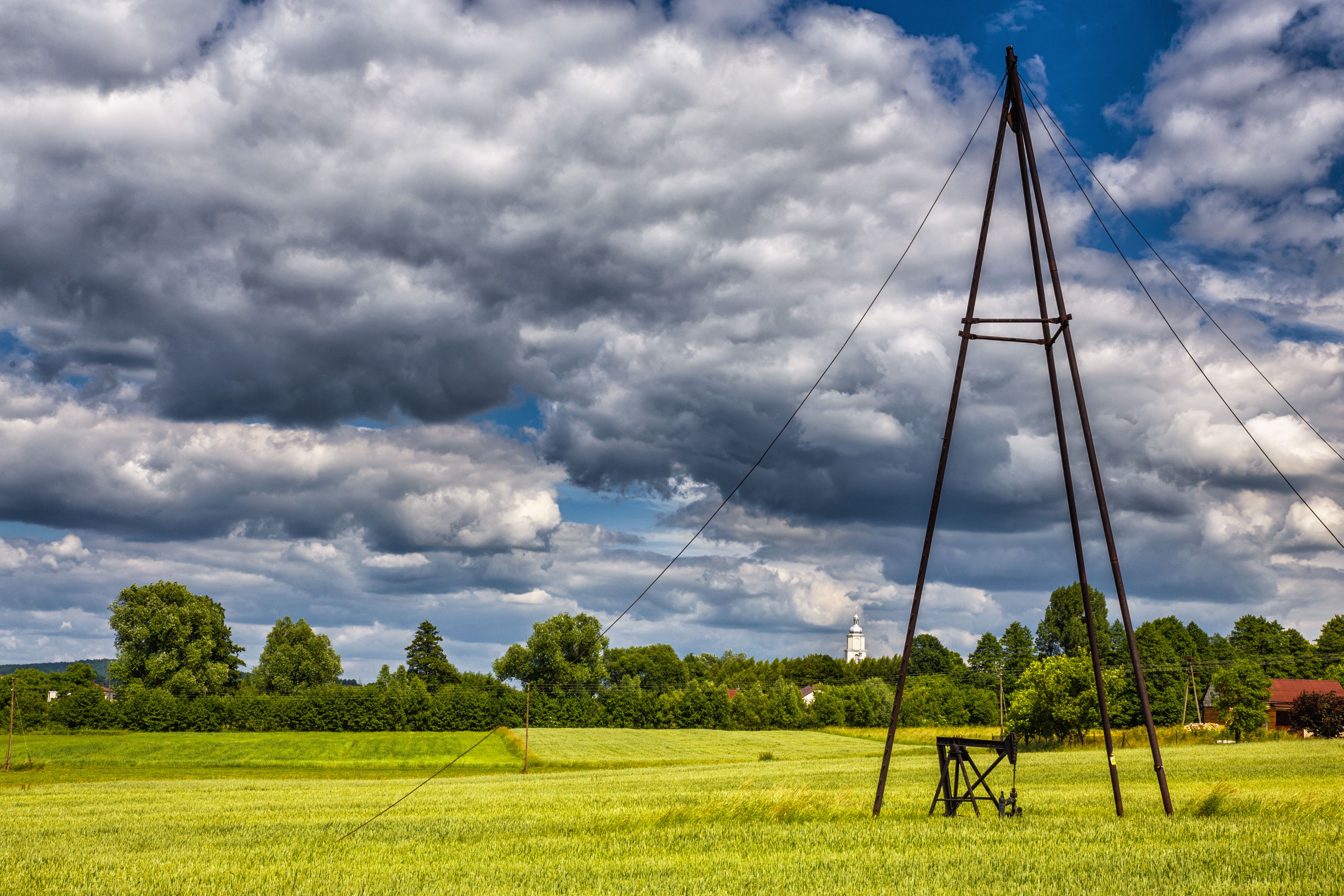 The remains of the petroleum industry in Gorlice are a huge touristic and educational attraction. The regional education (in schools) and industrial education (dynamically developing in Western Europe and starting to grow in Lesser Poland and Subcarpathia) are fields which may contribute to the promotion of Gorlice.
The remains of the petroleum industry in Gorlice are a huge touristic and educational attraction. The regional education (in schools) and industrial education (dynamically developing in Western Europe and starting to grow in Lesser Poland and Subcarpathia) are fields which may contribute to the promotion of Gorlice.
Even though, so much has been already done to commemorate the history of the oil industry, there are still many challenges we have to face. In order to achieve our goals, which were set long time ago, we need a lot of effort and financial resources.
We do hope that we will have the opportunity to complete our project and we will manage to save from oblivion the petroleum history of Gorlice.
A few years ago a small group of people, fascinated by the history of the oil industry of our region, decided to undertake a project which main aim was to memorialize the heritage of industrial culture connected with the extraction and petroleum refining in the area of Gorlice and on the area of whole Subcarpathia. An idea to create a Carpathian-Galician Oil Trail was born.
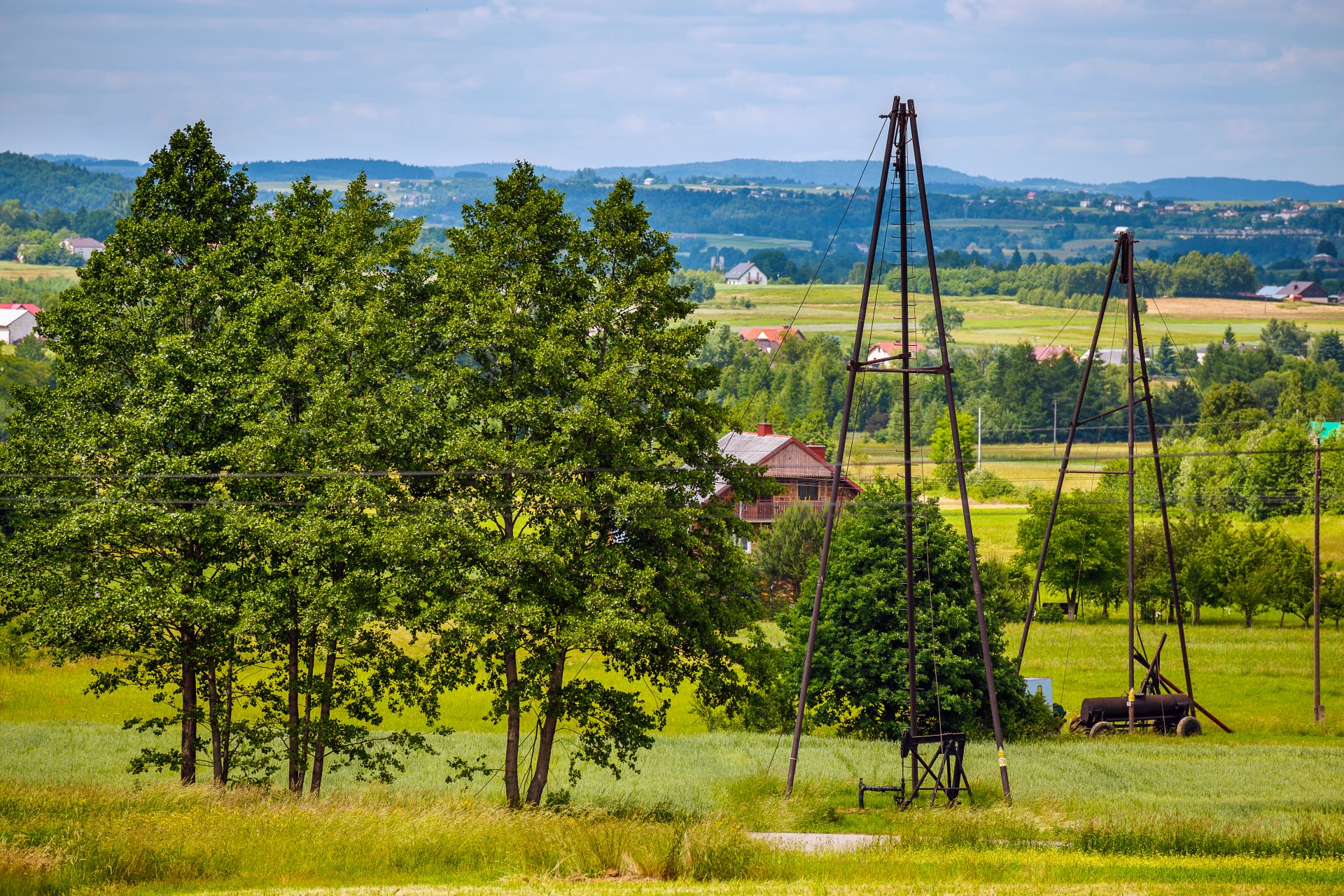 The Carpathian-Galician Oil Trail is the beginning of the transgenic Oil Trail going from Gorlice through Jasło, Krosno, Sanok and Ustrzyki Dolne coming to the area of Ukraine – Borysław, Drohobycz and Lviv. It saves from oblivion the relicts of the petroleum industry which developed in Gorlice since the second half of the 19th century.
The Carpathian-Galician Oil Trail is the beginning of the transgenic Oil Trail going from Gorlice through Jasło, Krosno, Sanok and Ustrzyki Dolne coming to the area of Ukraine – Borysław, Drohobycz and Lviv. It saves from oblivion the relicts of the petroleum industry which developed in Gorlice since the second half of the 19th century.
On the route of the trail there are many memorabilia and relics documenting the history and activities of the pioneers of the oil industry in Gorlice (including Ignacy Łukasiewicz, Wojciech Biechoński, Władysław Długosz, Wiliam H. Mac Garvey, Adam Skrzyński and Józefy Szymonowicz). The objects which were placed on the trail were chosen according to some criteria: the rareness, the historical and artistic value, the natural and cultural surroundings and the accessibility for tourists. On the trail there are also antique, rural objects; historic technical objects: the remains of railways; architectural monuments: urban layouts; sacred objects: churches, chapels, crosses, monastery complexes; cemeteries from the First World War; relics of the wooden farm architecture; flora complexes; water body; cultural objects; scenic overlooks. The Carpathian – Galician Oil Trail crosses the „Małopolska” Path of Wooden Architecture and the International Carpathian Cycle Route.
The Oil Trail spreads over 13 localities: Gorlice, Ropica Polska, Szymbark, Ropa, Łosie, Bielanka, Siary, Sękowa, Kryg, Kobylanka, Lipinki, Libusza and Zagórzany.
On this area the Carpathian- Galician Oil Trail has been marked with 8 big information boards: 3 in Gorlice, 1 in Biecz, 1 in Ropa, 1 in Kryg, 2 in Sękowa; 6 address arrays and 20 directional boards. The Trail is 50 kilometers long.
In Gorlice the information boards are located:
- At the entrance of William McGarvey’s Park in Glinik Mariampolski at the Wyszyński Street. The board is devoted to the figure of Wiliam McGarvey – an industrialist who came to Gorlice around 1882-84 at the invitation of Stanisław Szczepanowski – the discoverer of rich petroleum fields. In the 80s of the 19th century McGarvey built the first objects of the oil refinery in Glinik Mariampolski. Slightly afterwards, in order to be self-sufficient in all areas of the petroleum industry together with the financier and banker John Bergheim, he built a mechanical workshop (today’s Glinik Machine Factory in Gorlice) and Driling Tools Factory.
The district of Glinik Górny can take pride in the town’s oldest park. It was established in 1887 on the area of a grange, which belonged to Wiliam Henry McGarvey – a Canadian oil man and a founder of the Petroleum Refinery and the Machine Factory in the former Glinik Mariampolski. In the park you can find a house where McGarvey used to live.
- At the intersection of Węgierska and Tęczowa Street, near the road which leads to the Długosz Family Palace in Siary. The board is devoted to the figure of Władysław Długosz – the pioneer of the oil industry, senator, deputy, Galician Minister and chairman of the Polish Oil Association. Władysław Długosz was also the owner of the Palace in Siary.
- Near the Open-Air Museum of the Oil Industry „Magdalena” at Lipowa 14 street.
Objects which can be found on the trail:
The Town Hall in Gorlice
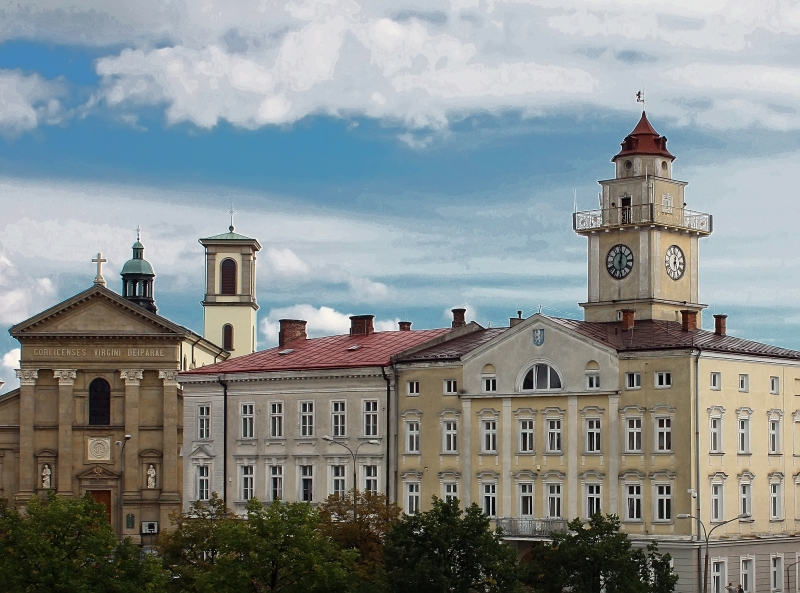 The building used to house a pharmacy where Ignacy Łukasiewicz conducted his experiments while working on the oil distillation. A reminder of the pharmacy is a fresco painting visible in the town hall foyer of a Greek goddess Hygieia, the patroness of pharmacists. The front of the building presents a replica of the world’s first kerosene street lamp invented by Łukasiewicz.
The building used to house a pharmacy where Ignacy Łukasiewicz conducted his experiments while working on the oil distillation. A reminder of the pharmacy is a fresco painting visible in the town hall foyer of a Greek goddess Hygieia, the patroness of pharmacists. The front of the building presents a replica of the world’s first kerosene street lamp invented by Łukasiewicz.
The Ignacy Łukasiewicz PTTK Regional Museum
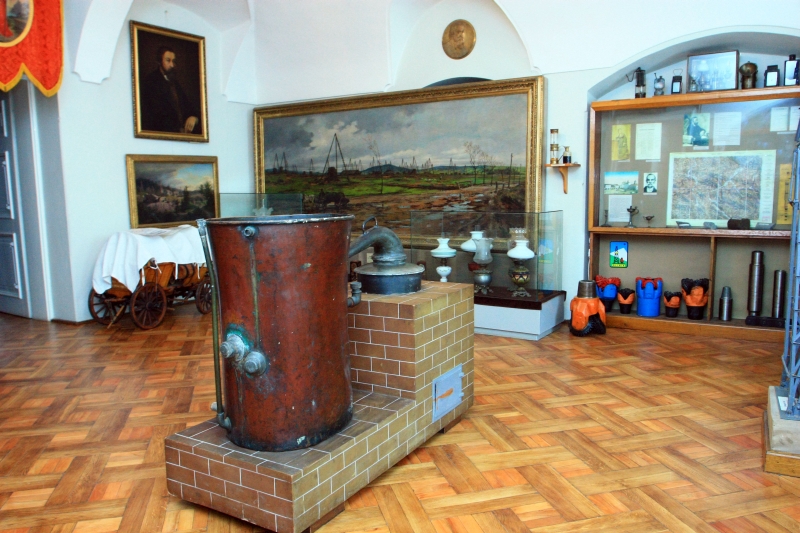 One of the museum rooms is devoted to Ignacy Łukasiewicz. Valuable keepsakes of Łukasiewicz include the apothecary alembic (a device used for the petroleum distillation) and the prototype of the world’s first kerosene lamp.
One of the museum rooms is devoted to Ignacy Łukasiewicz. Valuable keepsakes of Łukasiewicz include the apothecary alembic (a device used for the petroleum distillation) and the prototype of the world’s first kerosene lamp.
The Open-Air Museum of the Oil Industry „Magdalena”
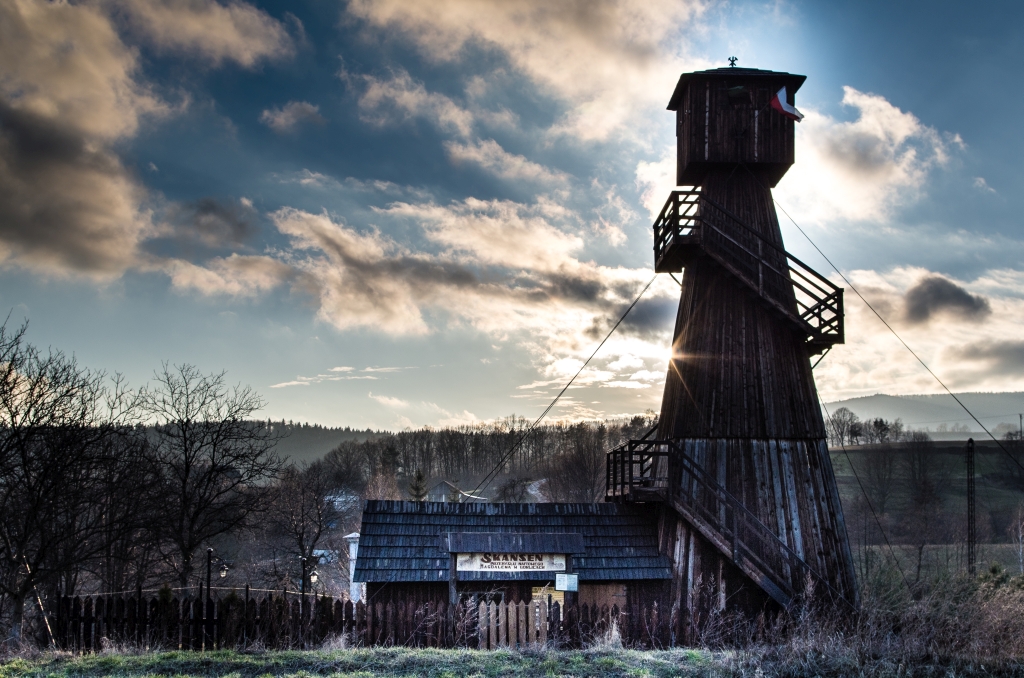 Inside you may not only see the tools used for drilling petroleum more than 100 years ago, but also have a try at lighting fire with bellows in the forge, forge a horseshoe for good luck, bow to St. Barbara, see the beautiful panorama of the Beskid Niski mountains from the top of the drilling tower or excavate the „black gold” from the reconstructed „Ćwiartka” mine, which is guided by the Łebak (oil worker).
Inside you may not only see the tools used for drilling petroleum more than 100 years ago, but also have a try at lighting fire with bellows in the forge, forge a horseshoe for good luck, bow to St. Barbara, see the beautiful panorama of the Beskid Niski mountains from the top of the drilling tower or excavate the „black gold” from the reconstructed „Ćwiartka” mine, which is guided by the Łebak (oil worker).
Shrine of the Pensive Christ at the intersection of Węgierska and Kościuszki Street – at a place where the first in the world street kerosene lamp was lit
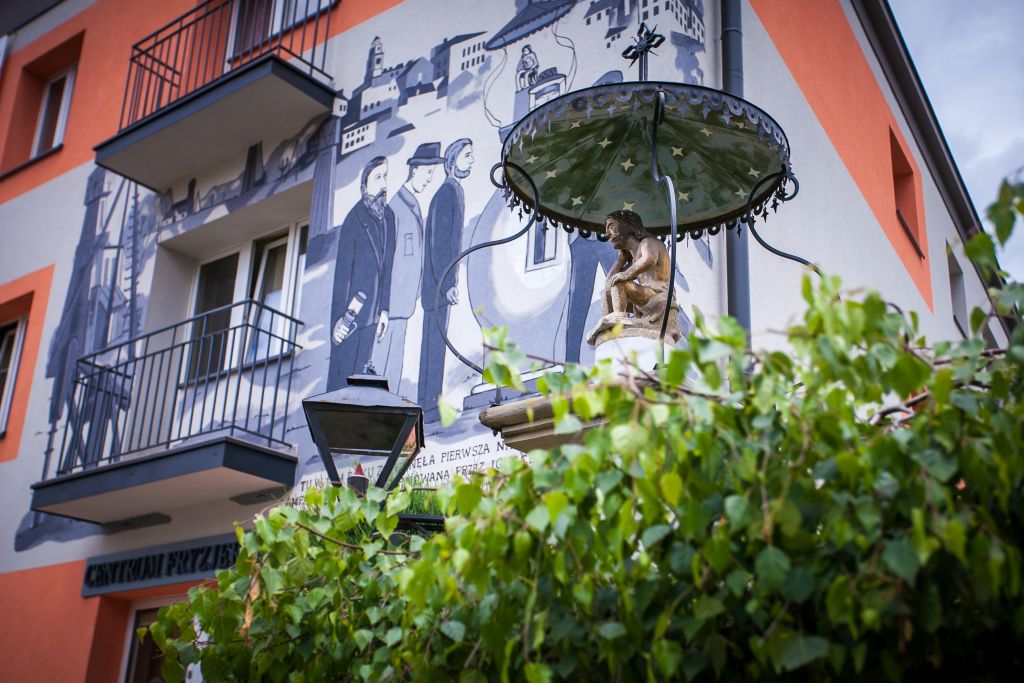 The world’s first street oil lamp was ignited in Gorlice in 1854. It was placed on a barrel-shaped shrine with the Pensive Christ under a baldachin. The shrine stands at the intersection of Węgierska and Kręta Street ever since, reminding us about the epochal event. The Shrine was constructed in 1850, whereas the statue itself comes from 1573. The original figure can be seen in the PTTK Regional Museum. The legend says that the sculpture was brought to Gorlice by a river during a flood.
The world’s first street oil lamp was ignited in Gorlice in 1854. It was placed on a barrel-shaped shrine with the Pensive Christ under a baldachin. The shrine stands at the intersection of Węgierska and Kręta Street ever since, reminding us about the epochal event. The Shrine was constructed in 1850, whereas the statue itself comes from 1573. The original figure can be seen in the PTTK Regional Museum. The legend says that the sculpture was brought to Gorlice by a river during a flood.
Monument of Ignacy Łukasiewicz at the Kościuszki Street
The bust of Ignacy Łukasiewicz – the discoverer and pioneer in the oil industry is situated near the intersection, on the opposite side of the Pensive Christ Shrine – at the place where the world’s first street oil lamp was ignited.
The Monument of the Millennium of the Polish State at Legionów Street
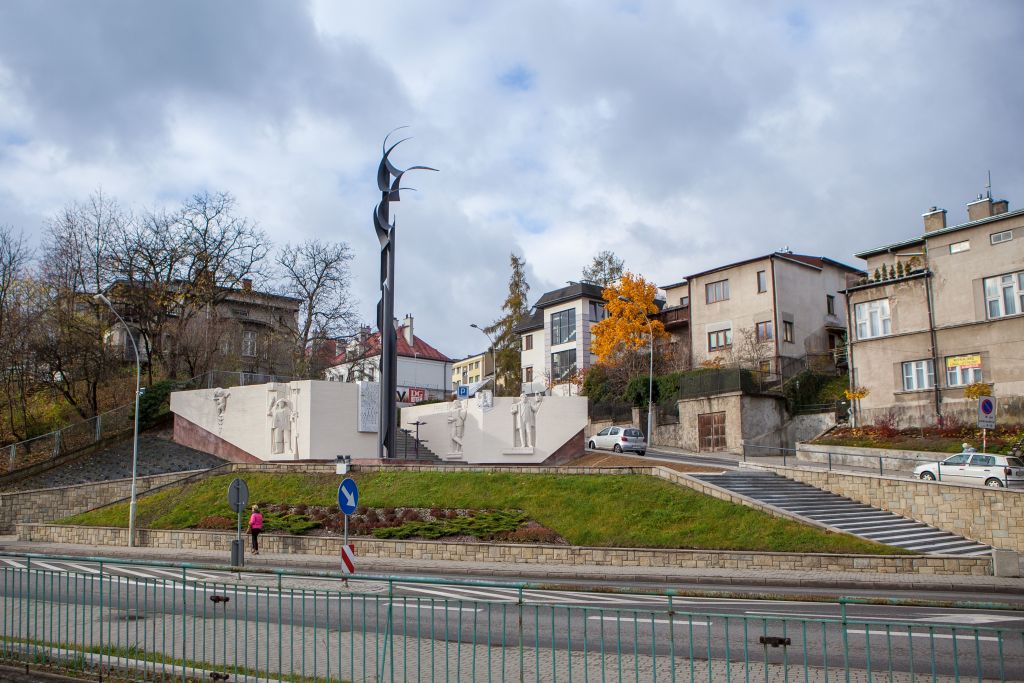 The Monument was designed by Marian Konieczny and Włodzimierz Kunz. It represents sculptures of Ignacy Łukasiewicz, Marcin Kromer, a figure of a driller and a mother with a child. It was erected in 1966 on the millennium anniversary of the creation of the Polish State.
The Monument was designed by Marian Konieczny and Włodzimierz Kunz. It represents sculptures of Ignacy Łukasiewicz, Marcin Kromer, a figure of a driller and a mother with a child. It was erected in 1966 on the millennium anniversary of the creation of the Polish State.
The Monument of Ignacy Łukasiewicz at Wyszyński Street
The Monument of Łukasiewicz – the explorer, pioneer and founder of the petroleum industry is placed in front of the school which is named after him.
„The Łukasiewicz’s bench” in front of the Town Hall
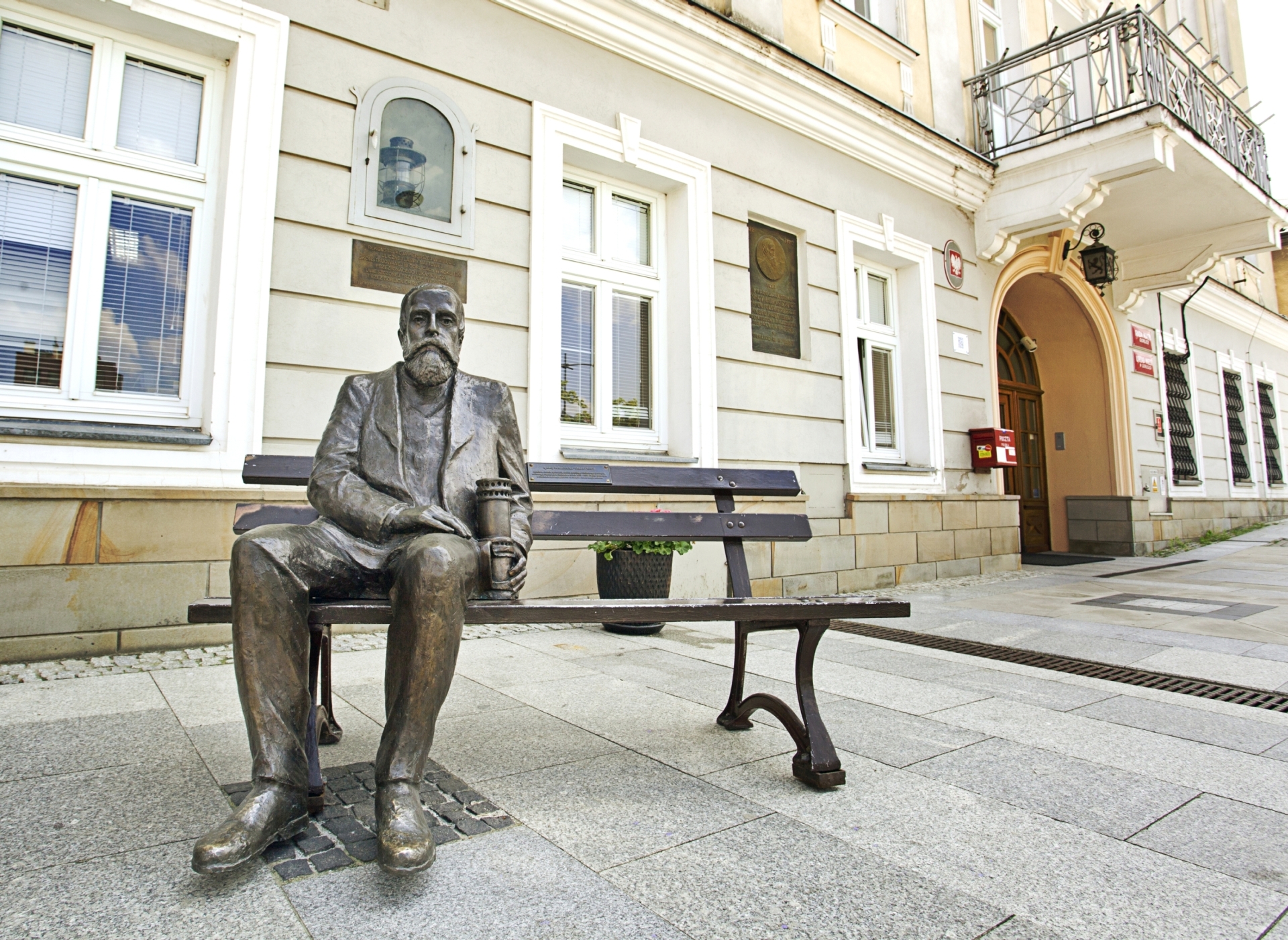 The ceremonial unveiling of the Łukasiewicz’s bench, designed by Zdzisław Tohl, took place on 7 April 2013 at the Market Square. Ignacy Łukasiewicz was the originator of the petroleum industry and the inventor of the oil lamp. From 1853 to 1858 he lived and worked in Gorlice. He was running an apothecary in the building of today’s Town Hall. Thanks to him, the world’s first street oil lamp was ignited at the intersection of Kościuszki and Wegierska Street.
The ceremonial unveiling of the Łukasiewicz’s bench, designed by Zdzisław Tohl, took place on 7 April 2013 at the Market Square. Ignacy Łukasiewicz was the originator of the petroleum industry and the inventor of the oil lamp. From 1853 to 1858 he lived and worked in Gorlice. He was running an apothecary in the building of today’s Town Hall. Thanks to him, the world’s first street oil lamp was ignited at the intersection of Kościuszki and Wegierska Street.
„Glimar” Oil Refinery in Gorlice
A Canadian engineer Wiliam Henry McGarvey together with an Austrian financier John Simeon Bergheim established a petroleum refinery (today’s “Glimar” refinery). For decades the refinery was a thriving plant. Unfortunately, in 2005 the company declared its insolvency and started the process of employee dismissals.
Ignacy Łukasiewicz – the pioneer of the petroleum industry
Ignacy Łukasiewicz (1822-1882) – the founder of the petroleum industry. He came to Gorlice in 1853 (according to some other sources in 1854). He took over the apothecary after Jan Tomaniewicz. The apothecary was located in the building of today’s Town Hall and was owned by Juliusz Bartko. Łukasiewicz’s activities in the apothecary are confirmed by the original bill from 07.12.1854 together with his signature. While his stay in Gorlice, he was actively engaged in pharmaceutical, toxicological, chemical and biological studies. He was also involved in the Forest Commission as a zoological and botanical examiner. In the apothecary apart from the pharmaceutical activities, he was also doing research work and experiments with oil, consequently he received the product of the oil distillation – paraffin. Due to him, at the intersection of Kościuszki and Węgierska Street, the world’s first street oil lamp was lit.
In 1855 Gorlice was haunted by the cholera epidemic which had tragic consequences for the whole town - the disease killed many people. Łukasiewicz with huge devotion and determination fought against the epidemy. His help was so much appreciated and valued that when two years later the town found out about his relocation to Jasło, people asked him to stay in Gorlice. He was even offered some financial help with the rental payment by the Gorlice’s Jewish community. The apothecary was bringing some profits but it was not enough as Łukasiewicz needed a considerable amount of financial resources in order to conduct his studies and experiments.
The poor earnings forced Łukasiewicz to find additional job. He intended to work as the civic cash clerk where he could earn extra 200 florins annually. However, the Lviv authorites did not give him the permission to have two jobs at the same time. Because of his conspirational activities in the past he was treated as a “dangerous individual”.
In 1857 Łukasiewicz leased his second apothecary in Jasło. He was able to do that, as at that time his fellow student Walery Rogowski (according to some other sources: Rogawski) was helping him in running the one in Gorlice. Ignacy’s lonely stay in Gorlice reassured him that it was high time to change his marital status. As a 33 years old man, he decided to marry Honorata Stacherska. Since his beloved was his niece, Łukasiewicz had to receive permission from the Government as well as the Papal dispensation in order to get married. The whole process took 2 years. The wedding took place in the parish church on the 20th April 1857, their marriage witnesses were Walery Rogowski and Alojzy Krziż - a doctor from Jasło.
On the 1st February 1858 in Jasło their daughter Marianna was born. Misfortunately, she died on 7th December 1859 (after their child’s loss, they adopted Walentyna Antoniewiczówna, who was the daughter of Łukasiewicz’s teacher).
In the beginning of 1858, the widow after Juliusz Bartko – owner of the apothecary in Gorlice, moved to Nowy Sącz. This was a perfect opportunity for Łukasiewicz to buy the apothecary out. Unfortunately, also this time, the Lviv authorities did not allow for this transaction. Probably not having any other choice, at the end of 1858 Łukasiewicz moved for good from Gorlice. He relinquished the lease to Walery Rogowski for 3 000 florins and left Gorlice.
The abondonment of Gorlice did not mean that Łukasiewicz severed relations with people he worked and was friends with. One of these people was Wojciech Biechoński – Mayor of Gorlice from 1887 to 1902. In December 1873 the assembly of the oil entrepreneurs took place. During this gathering a resolution to create an Oil Association was adopted. 3 years later in Jasło an informal committee reinforcing the ventures of the oil industry, managed by Ignacy Łukasiewicz, appeared. A year later Łukasiewicz conducted an oil congress in Lviv, where the policy statement of the Oil Association developed by Wojciech Biechoński was accepted. Due to this action on 8th May 1879 the Governorship confirmed the charter of the Oil Association in Galicia, which was based in Gorlice. From that time forward up until 1939 the Association was conducting legal activites. The Association’s efforts resulted in the publication of the fortnightly magazine “Górnik” (edited in Gorlice during 1882-1886). The release of the first magazine took place one week before Łukasiewicz’s death.
Another evidence of Ignacy’s connection with the Gorlice’s region is the fact that in 1873 he owned 10 oil-wells in Pagorzyna. In 1874 he established another copartnership with Karol Klobassa, Feliks Stokowski and Mikołaj Federowicz. As a result, a distillery in Ropa was built. Łukasiewicz was the originator of the vocational and secondary oil schools, he was also determined to create a specific degree course. His idea had a group of supporters and in February 1881 the National Mining Council adopted the motion unanimously. They decided to create an Oil Mining School together with the charter, statute and the cost of annual expenditure. The National Oil Association indicated that the school should be located in Gorlice – in the place which was foremost in the Western Galicia because of the level of the education of the oil workers and the accomplishments in the developing petroleum industry.
